What is Vegetable Glycerin?
Glycerin, also known as glycerol, is an organic compound of carbon, hydrogen and oxygen with the chemical formula C3H8O3. It is produced industrially, usually as a by-product of soap manufacture, from oils and fats. It can be made from animal fat or, in the case of vegetable glycerin, vegetable oil. The source of the raw material does not affect the chemistry of the final product, but, since glycerin is widely used in foods and medications, this distinction is important for vegetarians. It is also used as a sweetener and as an ingredient in a number of cosmetic products.
Structure and Properties
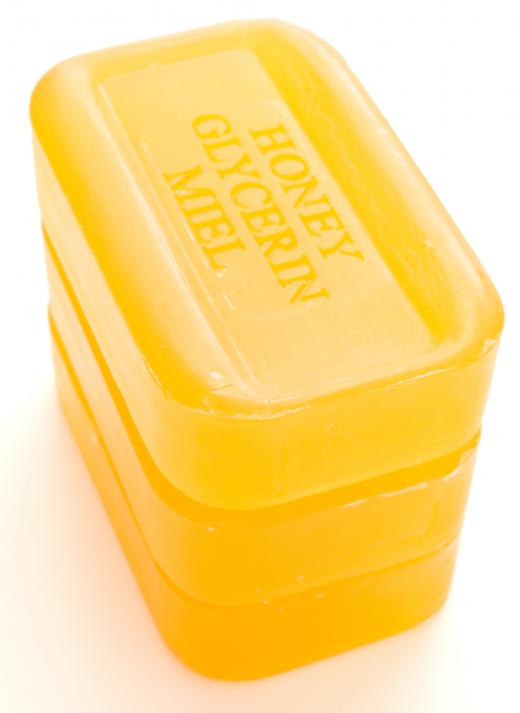
The compound consists of a chain of three carbon atoms, to which are attached hydrogen atoms on one side and hydroxyl (OH) groups on the other. The three OH groups form hydrogen bonds between molecules, giving the compound a syrup-like viscosity and allowing it to dissolve easily in water. Chemically speaking, glycerin is an alcohol, but for food purposes, it is classed — in the USA — as a carbohydrate by the Federal Food and Drug Administration (FDA), because it provides calories and is not a fat or a protein.
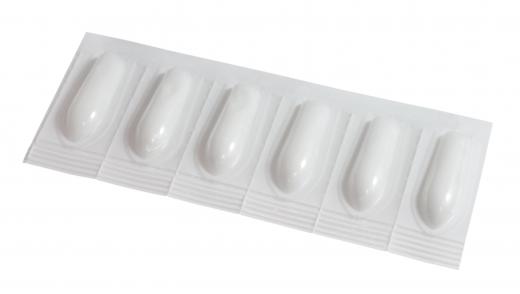
Pure glycerol does not crystallize easily, but it can be chilled to form a solid that melts at about 64.4°F (18°C). It lowers the freezing point of water, however, by an amount that depends on the concentration. For example, a 66.7% solution freezes at -51°F (-46.1°C). For this reason, it can be used as non-toxic antifreeze and for storing sensitive liquids, such as enzymes, in laboratory freezers.
Manufacture
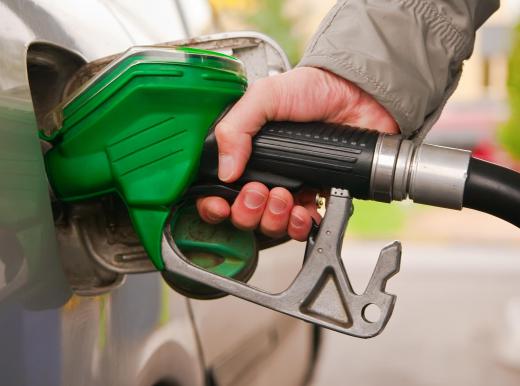
Glycerol forms the “backbone” of many lipids, or oils and fats, and there are various processes that can be used to extract it from these substances. Most glycerin is made as a by-product of the manufacture of soap. In this process, either animal fat or vegetable oil can be used. It is heated with a strong alkali, usually caustic soda (sodium hydroxide), which produces soap and a solution of glycerin in water. This solution is then purified by distillation.
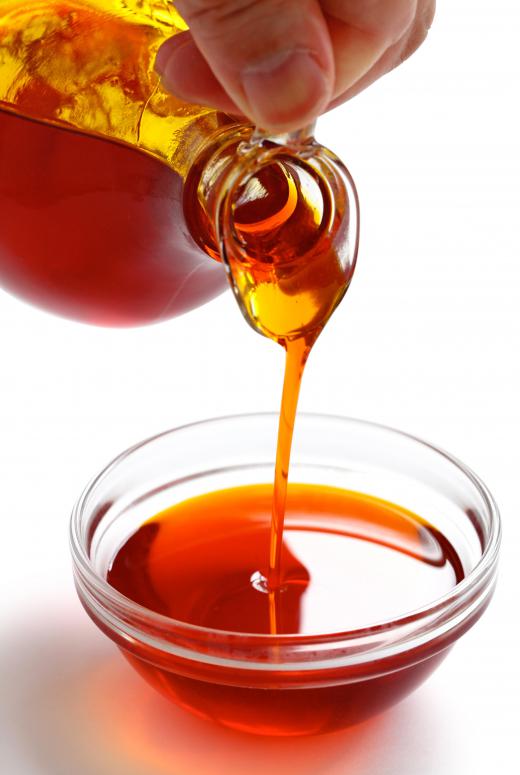
Vegetable glycerin can also be made directly from vegetable oil — often coconut or palm oil — by heating it to a high temperature under pressure with water. The glycerin backbone splits off from the fatty acids, and is absorbed by the water, from which it is then isolated and distilled to obtain the pure product. Food-grade vegetable glycerin is 99.7% pure, with the remaining 0.3% being water.
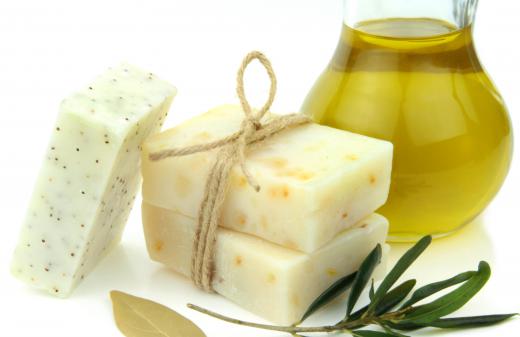
The interest in biodiesel fuel has resulted in the production of large amounts of low quality, non-food grade vegetable glycerin as a by-product. Purifying the liquid is not considered economically viable and it cannot be casually disposed of as it contains toxic methanol, which is used in the manufacturing process. As of 2013, there is much research into finding a use for this substance — something that does not require high purity glycerin. One promising possibility is to use it as a precursor in the production of some useful plastics.
Main Uses
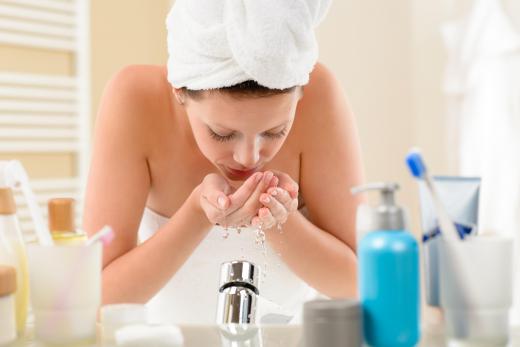
Glycerin is widely used in the food industry for two main reasons: it has a sweet taste, but has fewer calories than sugar; and it is hygroscopic, that is, it absorbs moisture from the air. It is therefore used both to sweeten foods and to keep them moist. The compound is metabolized more slowly than sucrose — the type of sugar most commonly found in candy and in processed foods — and therefore does not have such a dramatic effect on blood sugar levels. It also does not contribute to bacterial tooth decay. Foods marketed as being low in carbohydrates are often sweetened with glycerin.
Another major use is in the cosmetics industry. Due to its hygroscopic properties, it is used in many moisturizing skin products, as it seems to help relieve dry skin problems by drawing water up from the lower layers. It is also a component of glycerin soap, which is often used by people with sensitive skin. Lotions containing this compound are also popular.
Vegetable glycerin can be used as a substitute for ethanol — the chemical commonly called “alcohol” — in making botanical extracts, such as herbal essences. It acts as a solvent that dissolves the substances of interest from the raw plant material. The advantage of this is that people who do not want to be exposed to alcohol can still have access to the botanical products. The disadvantage is that the resulting products have a much shorter shelf life.
There are also medical uses for vegetable glycerin. It is a common ingredient in cough mixtures, due to its soothing properties. Other applications are as a topical remedy for a number of skin problems, including psoriasis, rashes, burns, bedsores and cuts; as a laxative, in the form of suppositories; and to treat gum disease, as it inactivates the associated bacterial colonies.
AS FEATURED ON:
AS FEATURED ON:
















Discussion Comments
how much pollution is from biodiesel usage?
Compared to harm reduction while assisting smokers, PG, VG and flavor ingredients are more sensible than not. To various anon. declaring danger, these are political views without tests or citations and without relationship to the real world.
To balance points of view, consider that the International Agency for Research on Cancer found vapor less damaging than red meat. “In the over 10 years since electronic cigarettes have been on the market, we have had zero cases of diseases related to their use and zero deaths.”
The main concern these days with Vegetable Glycerin (VG) is: "Is it safe to inhale in respect to vaping?"
There are four ingredients in Vapor-fluid or "E-juice" (generally). They are: Propylene Glycol (PG), Vegetable Glycerine (VG), Nicotine, and Sucrose.
First: the Nicotine and Sucrose(Flavoring and Sugar) are extracted using PG. This means that the fluid can be 100 percent PG, but not 100 percent VG if the liquid contains all four ingredients.
Second: PG is very hard on the lugs and causes the "weight" you feel when inhaled. If you get the wrong PG in your fluid, it can be very bad for you. There are two types of PG: Food Grade and Industrial. Make sure you are getting your fluid from a reputable source to avoid this dangerous mishap.
Third: Nicotine, even in its pure form, can cause birth defects, heartburn, upset stomach, and flushing in individuals who are sensitive. It is of note that Nicotine consumed in massive quantity can be deadly.
Last: VG is generally safe to inhale and acts as a moisturizer in the lungs. Remember! The lungs do need to be moist in order to breathe properly.
In regions that have very dry air or those who have chronic lung issues, tend to find comfort from Vaping Pure 100 percent VG. This is done by removing all; PG, Nicotine, and flavoring from your liquid.
Although it may not be something you are ready to do (taking all the fun stuff out of the fluid) many including me, find it refreshing and still very tasty. It is worth a try.
Plus, you get to blow giant clouds of vapor -- enough to fill a room at times.
@ Post 13: Your wife's log showed vaping was causing her issues, but you did not discuss any research on isolating which chemical was causing her issues.
As stated in this article and many other research papers, glycerin tastes sweet but it is not metabolized as sugar in the body and doesn’t cause a rise in blood sugar. It was most likely not the cause of your wife's issues.
It is important to talk to a doctor and try to isolate the aggravating chemical by switching to different ejuice mixes. Try each of these mixes: VG/Flavor/Nicotine, PG/Flavor/Nicotine, VG/PG/Nicotine, VG/PG/Flavor. Whichever causes no issue, the missing ingredient from that mix is the one causing the issue. If all of them cause issues, then you may be having problems with more than one ingredient and vaping might not be a good choice for you. This is very rare, and again, talk to a doctor.
Just a heads up. The nicotine used in the e-cigarette liquid is actually the culprit in raising blood sugar level (please research).
For the person looking for a sweetener for their daughter in South Africa, have you tried looking at this product: Now Foods, Better Stevia Liquid Sweetener. You can have it mail ordered if you find out it suits her physical needs.
My two year old daughter is lactose and gluten intolerant, and has candida. The only sugar or sweetener that is permitted is Xylotol or vegetable glycerine, but I can't find vegetable glycerine in South Africa. Could you please help me find it, or tell me what amounts of Xylotol I would need to substitute 100 percent vegetable glycerine?
My wife is a type 1 diabetic. When she started vaping, her blood sugar level went significantly higher than normal. With information from her log, we know for sure the vaping caused it.
Upon researching the ingredients, we figure it was the vegetable glycerin which probably caused the high blood sugar level.
More importantly, the E-Liquid's ingredient propylene glycol, raises another health concern! I would suggest you research it yourself.
@ Post 8: VG and vaseline are as different as any two products can be. Vaseline is a petroleum product.
I use this to smoke my e cigarette. I wonder what it does to my lungs?
How healthy is it to inhale this as its used in electronic cigarettes?
I always thought glycerin and vaseline were similar.
Glycerin can also be used as a hide tanning solution because it acts as a protectant and keeps the hide from drying out. Originally, brains from animals were boiled and used for tanning solution. Glycerin and brains both work presumably because they have similar properties - brains contains lots of lipids (fats) and glycerin is derived from animal and vegetable fats.
For lotions that contains this, if the air is dry enough wouldn't the glycerin pull more moisture from the skin then to the top layer (where the lotion is) instead out of the air? And actually be more harmful in long term?
It's also used as a base for the liquid used in electronic cigarettes. The vegetable glycerin is vaporized (along with the liquid nicotine and/or flavoring) to make the vapor that electronic cigarettes produce.
@purplespark: Vegetable glycerine is a carbohydrate but it does not have much of an effect on one’s blood sugar so it can be safely used by diabetics using insulin. It is also a natural preservative.
To me, the best use of vegetable glycerine is for the hair. For people with dry, brittle hair, it serves as a great moisturizer.
@purplespark: There are actually many benefits to vegetable glycerine. It has great moisturizing properties for the skin. It draws oxygen into the skin which makes it excellent for anti-aging.
It is also hypo-allergenic so people with acne can use it without worrying about it aggravating their skin condition. It also has healing properties for present acne lesions.
What are the different vegetable glycerin benefits?
Post your comments